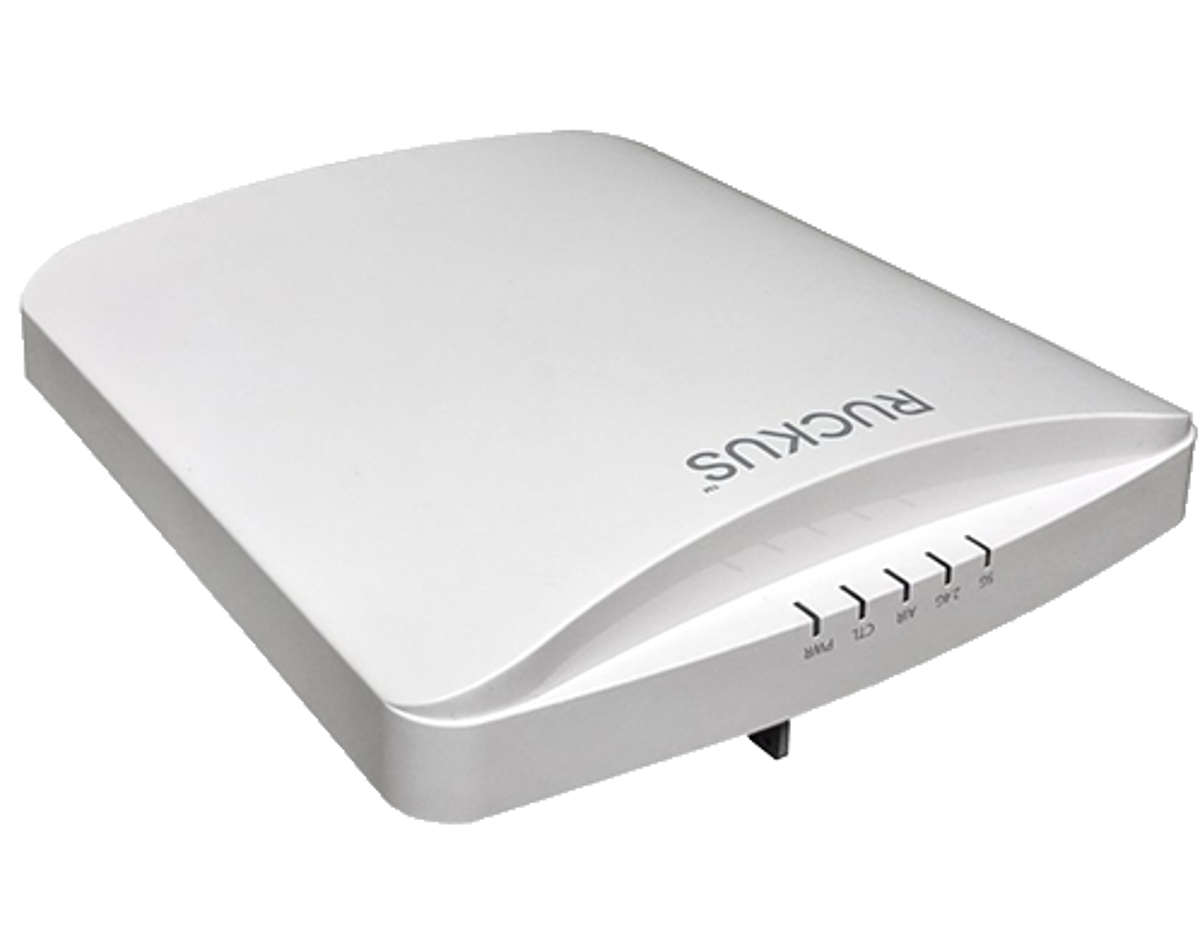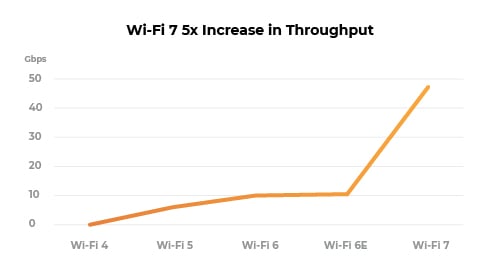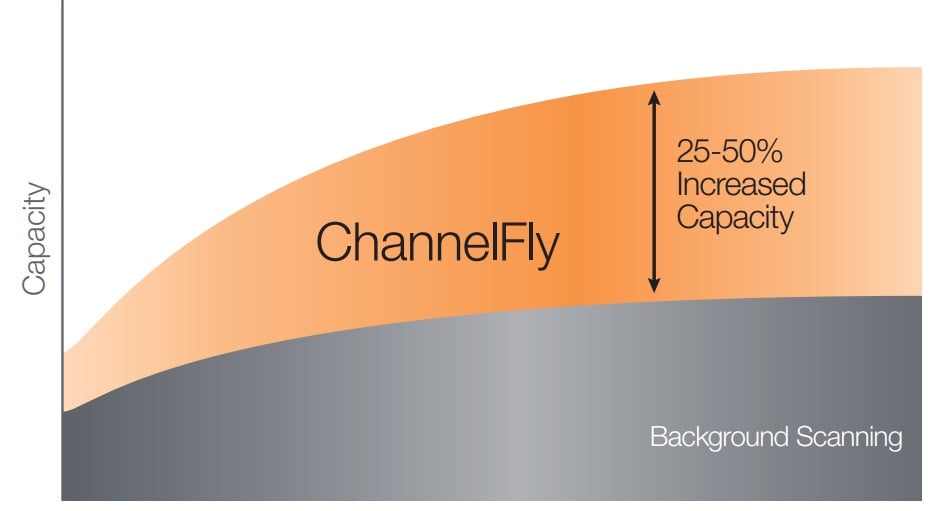Wireless Access Point Technology
Wireless access points (APs) allow multiple client devices to connect to the same Wi-Fi network, even if they’re out of range of the main router. Some smaller organizations also use wireless APs to connect wireless devices to their wired network without creating a WLAN (wireless local area network).
Wireless access point technology evolves rapidly to meet demands for greater security, performance, reliability, capacity, and range. This post describes some of the most important features to look for in a wireless access point and provides examples of AP solutions that deliver these capabilities.

| Wireless AP Technology | Description |
|---|---|
| WPA3 Security | The current generation of Wi-Fi Protected Access, which offers significant security improvements over previous generations. |
| Wi-Fi 7 | Provides higher throughput, lower latency, and greater reliability than older wireless standards. |
| 6GHz | A new, clean spectrum that’s available for high-performance wireless networking. |
| Radio Resource Management | Manages co-channel interference and radio resources to improve the efficiency of RF spectrum utilization. |
| Automated Frequency Coordination | Coordinates spectrum use on the 6 GHz band with licensed users already operating on it. |
| Multi-Link Operation | Allows a client device to communicate with the AP over multiple radios and frequency bands at the same time. |
| Adaptive Antennas | Uses high-gain directional antennas to find the best connection path between client devices and wireless APs. |
| Automatic RF Channel Selection | Optimizes channel selection based on capacity across all channels to increase Wi-Fi capacity without deploying additional APs. |
| MU-MIMO | Allows wireless AP radios to transmit to multiple clients at the same time, reducing congestion. |
WPA3 Security
WPA3 is the current generation of Wi-Fi Protected Access, offering significant security improvements over previous generations. Wireless access points with WPA3 gain AES GCM encryption, SAE (a.k.a. Dragonfly protocol) authentication, and Enhanced Open security for public Wi-Fi traffic.
Wi-Fi 7
 |
Though Wi-Fi 7 products have been on the market for a couple of years, the Wi-Fi Alliance just began certifying Wi-Fi 7 devices in early 2024. Wi-Fi 7 provides higher throughput, lower latency, and greater reliability than older wireless standards, making it a must-have wireless access point technology for applications like multi-user augmented reality, industrial Internet of Things (IIoT), and high-speed media streaming. |
6GHz
The 6GHz band was approved for wireless transmission in 2020, providing a new, clean spectrum for high-performance Wi-Fi. Any wireless AP using the Wi-Fi 6E or Wi-Fi 7 standard has three radios to take advantage of: the 6GHz, 5GHz, and 2.4GHz bands.
Radio Resource Management
Radio Resource Management, or RRM, involves managing co-channel interference and radio resources to improve the efficiency of RF spectrum utilization on a wireless network. Newer wireless access point technology, such as the RUCKUS R770, uses AI-powered RRM to automatically minimize interference and maximize network throughput.
Automated Frequency Coordination
Automated frequency coordination, or AFC, is a method of coordinating spectrum use on the 6 GHz band with the licensed users already operating on that band. The best wireless APs support Standard Power (SP) mode to improve signal strength and range in the 6GHz band.
Multi-Link Operation
Multi-Link Operation, or MLO, is a technology for Wi-Fi 7 APs that allows a client device to communicate with the AP over multiple radios and frequency bands at the same time. MLO significantly increases throughput, reduces latency, and improves connection reliability.
Adaptive Antennas
Adaptive antenna technology uses high-gain directional antenna elements to find the best connection path between client devices and wireless APs. Access points with adaptive antennas cause less interference with other wireless devices while improving Wi-Fi range and performance. For example, the RUCKUS BeamFlex smart antenna system dynamically configures and reconfigures its antenna pattern to increase signal gain and deliver focused coverage, adapting to real-time environmental changes without affecting performance.
Automatic RF Channel Selection
 |
Some advanced wireless access points offer automatic RF channel selection technology to streamline Wi-Fi capacity management. For example, RUCKUS offers the ChannelFly solution, which works with BeamFlex adaptive antennas to optimize channel selection based on capacity across all channels, delivering 25-50% increased capacity without deploying additional APs. |
MU-MIMO
Multi-user multiple-input multiple-output (MU-MIMO) technology allows wireless AP radios to transmit to multiple clients at the same time. MU-MIMO breaks up wireless bandwidth into separate, individual, equal streams to allow multiple simultaneous connections without congestion. MU-MIMO wireless access points can be 2x2, 4x4, or even 8x8, indicating the number of streams they can create.
Get the Best Wireless AP Technology From RUCKUS & WAV
RUCKUS Networks offers high-performance APs using the most advanced wireless access point technology on the market. With a large selection of Wi-Fi 6E and Wi-Fi 7 access points for a variety of use cases and deployment challenges, RUCKUS can help you improve the speed, reliability, capacity, and range of your Wi-Fi networks.
As a trusted RUCKUS distributor, the wireless networking experts at WAV can match you with the best Wi-Fi solutions for your unique environment. Contact our support team to learn more.

